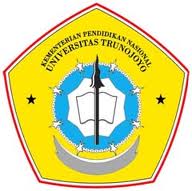Anda belum Log-in!
Silahkan Log in
Selamat Datang di Portal Digital Content Publisher
Rabu , 29 October 2025
Perpustakaan sebagai jantung pendidikan tinggi di Indonesia, harus mampu memberi kontribusi yang berarti bagi pelaksanaan proses belajar mengajar di perguruan tinggi.
di-posting oleh 130431100072 pada 2018-02-22 14:32:51 • 444 klik
IMPLEMENTASI POLE ROBOT SEBAGAI PENENTU POSISI KEBOCORAN PIPA GAS LPG (LIQUEFIED PETROLEUM GAS) DENGAN GUI (GRAPHICAL USER INTERFACE) DELPHI
IMPLEMENTATION OF POLE ROBOT AS DETERMINATION OF POSTED POSTED GAS LPG PIPE (LIQUEFIED PETROLEUM GAS) WITH GUI (GRAPHICAL USER INTERFACE) DELPHI
disusun oleh MERCURY PUTRA ULIL A
| Subyek: | fuzzy eucliden distance TGS 2610 Odometry 3DR Delphi |
| Kata Kunci: | fuzzy eucliden distance TGS 2610 Odometry 3DR Delphi |
[ Anotasi Abstrak ]
Resiko yang terjadi pada penggunaan pipa sebagai media untuk mengalirkan gas LPG (Liquefied Petreleum gas) adalah terjadi kebocoran pada pipa tersebut. Pegecekan kebocoran pipa gas sangat diperlukan. Oleh karena itu diperlukan mobile wireless sensor yang dapat mencari dan menentukan posisi kebocoran gas. Robot dengan desain pole robot akan menempel dan berjalan pada sisi luar pipa. Untuk mendeteksi kebocoran gas secara akurat digunakan 3 buah sesnsor TGS 2610. 3 sensor tesebut akan ditata sedemikian rupa sehingga menyebar pada sisi-sisi robot sehingga kebocoran pada semua sisi pipa dapat terdeteksi. Untuk menentukan posisi robot yang telah bergerak atau jarak pergerakan robot dari posisi awal digunakan metode odometry. Untuk menetukan sisi kebocoran menggunakan metode fuzzy dan eucliden distance Setelah didapatkan semua data yang diperlukan maka data data akan diolah oleh mikrokontroler Atmega. Data akan dikirim ke PC (personal computer) menggunakan 3DR dan ditampilkan pada GUI (Graphical User Interface) yang dibuat menggunakan software delphi. Hasilnya adalah pole robot dapat berjalan dengan baik pada pipa lurus maupun belok. Tingkat keberhasilan mendeteksi gas 71.43% secara keseluruhan. Percobaan dengan kebocoran gas besar mendapatkan keberhasilan 85.71% dan untuk kebocoran gas kecil 57.14%. Rata-rata error posisi berhenti robot 7.31% dengan rata-rata error odometry 3.25%. Metode euclidean distance memiliki rata-rata selisih 31.5° dan metode fuzzy memiliki rata-rata selisih 24.55°.
Deskripsi Lain
The risk that occurs on the use of pipes as a medium for the flow of LPG gas (Liquefied Petreleum gas) is a leak in the pipeline. Gas leak leakage checks are necessary. Therefore we need a mobile wireless sensor that can find and determine the position of gas leakage. Robot with pole robot design will stick and run on the outer side of the pipe. To detect gas leakage accurately used 3 units of TGS 2610. 3 sensors tesebut will be arranged in such a way that spread on the robot sides so that leaks on all sides of the pipe can be detected. To determine the position of the robot that has moved or the distance of the robot movement from the starting position is used odometry method. To determine the leakage side using fuzzy and eucliden distance method After obtaining all data required then data data will be processed by Atmega microcontroller. Data will be sent to a PC (personal computer) using 3DR and displayed on GUI (Graphical User Interface) created using delphi software. The result is a pole robot can run well on straight pipe and turn. The success rate detects gas 71.43% overall. Experiments with large gas leaks achieved 85.71% success and for small gas leakage of 57.14%. Average stop position robot 7.31% with an average odometry error 3.25%. The euclidean distance method has an average difference of 31.5 ° and the fuzzy method has an average difference of 24.55 °.
| Kontributor | : Diana Rahmawati, S.T., M.T. ; Kunto Aji Wibisono. S.T., M.T. |
| Tanggal tercipta | : 2018-02-08 |
| Jenis(Tipe) | : Text |
| Bentuk(Format) | |
| Bahasa | : Indonesia |
| Pengenal(Identifier) | : TRUNOJOYO-Tugas Akhir-12821 |
| No Koleksi | : 130431100072 |
 Download File Penyerta (khusus anggota terdaftar)
Download File Penyerta (khusus anggota terdaftar) 1. TRUNOJOYO-Tugas Akhir-12821-COVER.pdf - 694 KB
1. TRUNOJOYO-Tugas Akhir-12821-COVER.pdf - 694 KB 2. TRUNOJOYO-Tugas Akhir-12821-ABSTRACT.pdf - 18 KB
2. TRUNOJOYO-Tugas Akhir-12821-ABSTRACT.pdf - 18 KB 3. TRUNOJOYO-Tugas Akhir-12821-Chapter I.pdf - 26 KB
3. TRUNOJOYO-Tugas Akhir-12821-Chapter I.pdf - 26 KB 4. TRUNOJOYO-Tugas Akhir-12821-Chapter II.pdf - 334 KB
4. TRUNOJOYO-Tugas Akhir-12821-Chapter II.pdf - 334 KB 5. TRUNOJOYO-Tugas Akhir-12821-Chapter III.pdf - 627 KB
5. TRUNOJOYO-Tugas Akhir-12821-Chapter III.pdf - 627 KB 6. TRUNOJOYO-Tugas Akhir-12821-Chapter IV.pdf - 468 KB
6. TRUNOJOYO-Tugas Akhir-12821-Chapter IV.pdf - 468 KB 7. TRUNOJOYO-Tugas Akhir-12821-Conclution.pdf - 10 KB
7. TRUNOJOYO-Tugas Akhir-12821-Conclution.pdf - 10 KB 8. TRUNOJOYO-Tugas Akhir-12821-References.pdf - 157 KB
8. TRUNOJOYO-Tugas Akhir-12821-References.pdf - 157 KB 9. TRUNOJOYO-Tugas Akhir-12821-Appenduces.pdf - 261 KB
9. TRUNOJOYO-Tugas Akhir-12821-Appenduces.pdf - 261 KB Dokumen sejenis...
Dokumen sejenis...Tidak ada !
 Dokumen yang bertautan...
Dokumen yang bertautan...- Pemrograman database dengan delphi 6.0 & SQL
- Tip dan trik pemrograman Delphi 7.0
- Panduan pemrograman Borland Delphi 7. jil.1
- Pemrograman database dengan delphi
- PEMBUATAN SISTEM DIAGNOSA PENYAKIT THT DENGAN FUZZY EXPERT SYSTEM
 Kembali ke Daftar
Kembali ke Daftar 